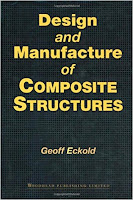Plasticity In Reinforced Concrete
Wai-Fah Chen ... 474 pages - Publisher: J. Ross Publishing; (January, 2007) ... Language: English - ISBN-10: 1932159746 - ISBN-13: 978-1932159745 ...
This indispensable reference presents a unified treatment of mathematical models of concrete structural analysis. In Part I, the author considers the experimental data regarding stress and strain characteristics of concrete under biaxial and multiaxial stress states and presents empirical equations for modulus and fracture strength. Part II discusses concrete elasticity, generalized failure, and fracture criteria, while the final part addresses concrete plasticity with applications of limit analysis and finite element analysis to concrete and reinforced structures. Key Features: Offers a comprehensive review of the advantages and limitations of constitutive equations and failure criteria with suggestions for improvements and refinements - Provides test results of the mechanical properties of concrete and summaries of the generally accepted experimental results in the field - Includes worked examples, chapter summaries, a glossary, chapter references, and a bibliography of finite element applications...
This indispensable reference presents a unified treatment of mathematical models of concrete structural analysis. In Part I, the author considers the experimental data regarding stress and strain characteristics of concrete under biaxial and multiaxial stress states and presents empirical equations for modulus and fracture strength. Part II discusses concrete elasticity, generalized failure, and fracture criteria, while the final part addresses concrete plasticity with applications of limit analysis and finite element analysis to concrete and reinforced structures. Key Features: Offers a comprehensive review of the advantages and limitations of constitutive equations and failure criteria with suggestions for improvements and refinements - Provides test results of the mechanical properties of concrete and summaries of the generally accepted experimental results in the field - Includes worked examples, chapter summaries, a glossary, chapter references, and a bibliography of finite element applications...



















